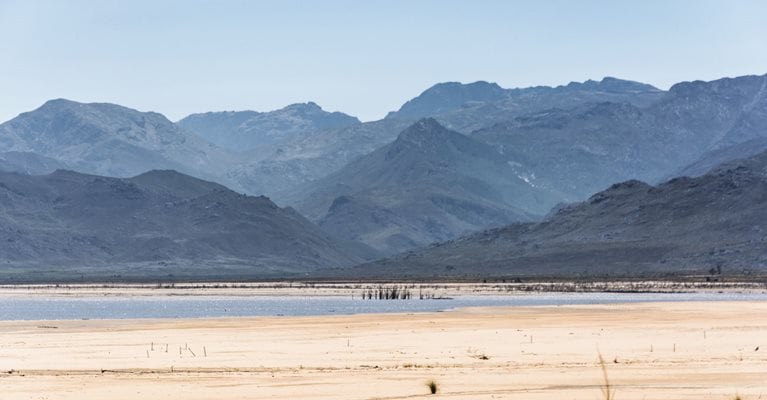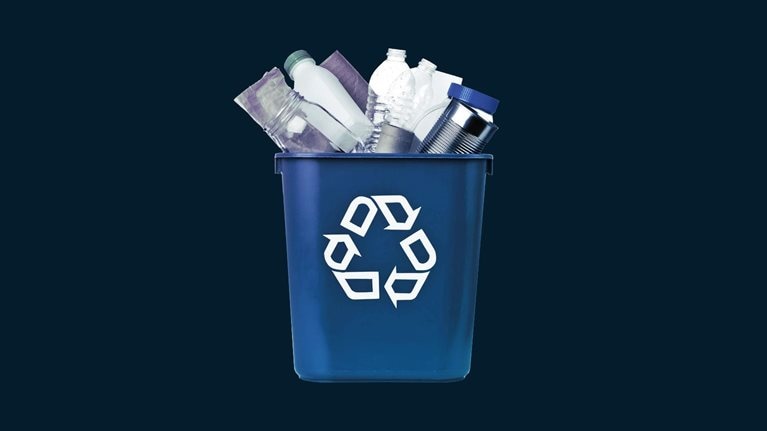Water is the lifeblood of humanity. With it, communities thrive. But, when the supply and demand of fresh water are misaligned, the delicate environmental, social, and financial ecosystems on which we all rely are at risk. Climate change, demographic shifts, and explosive economic growth all exacerbate existing water issues.
However, hope is not lost. Businesses can play a leading role in mitigating the water issue to limit not just their own risk but also the risk of all stakeholders relying on these systems. This can be accomplished by directing action through three spheres of influence: direct operations, supply chain, and wider basin health.
Water today
Water is as important to the world’s economy as oil or data. Though most of the planet is covered in water, more than 97 percent of it is salt water. Fresh water accounts for the rest, although most of it is frozen in glaciers, leaving less than 1 percent of the world’s water available to support human and ecological processes. Every year, we withdraw 4.3 trillion cubic meters of fresh water from the planet’s water basins. We use it in agriculture (which accounts for 70 percent of the withdrawals), industry (19 percent), and households (11 percent).
These percentages vary widely across the globe. In the United States, industrial usage (37 percent) is almost as high as agricultural (40 percent); in India, on the other hand, agriculture claims 90 percent of water withdrawals, while only 2 percent is put to work for industry. China’s withdrawals are 65 percent agriculture, 22 percent industrial, and 13 percent for household use. Considering that some of the agricultural usage is directed toward industry—for example, half of the production of maize, which is one of the top five global crops by total acreage and water consumption, is used for producing ethanol—the figures may understate how critical water is to business.

All industries rely on water in some way. A company’s water footprint can be seen in four key areas of its value chain: raw materials, suppliers, direct operations, and product use. Consider, for example, a T-shirt across its value chain—raw materials (cotton), suppliers (cotton-to-fabric processer), direct operations (final manufacturing, shipping, and retail), and product use (washing the shirt at home). Food and beverage companies use water as an ingredient in the products they sell, of course, but they also use it to irrigate, rinse, and clean crops, and to feed livestock. Metals and mining companies need water for dust control, drilling, and slurry when transporting products. In the tech industry, suppliers require ultrapure water for certain manufacturing processes, and data centers require water for cooling. Forest-products companies rely on water for making pulp and paper. Apparel companies rely on water to grow raw materials and wash garments. Even insurance companies are affected by water through claims related to water, such as crop-production insurance. Water’s uses and effects are as varied as business itself.
The availability of fresh water also varies greatly by location. The majority of the world’s fresh water is divided among 410 named basins, which are areas of land where all water that falls or flows through that region ultimately ends at a single source. These include the Huang He, Nile, Colorado River, Indus, and many others. Of these 410 named basins, almost a quarter (90) are considered “high stressed” (meaning that their ratio of total annual withdrawals to total available annual supply exceeds 40 percent). These 90 highly stressed basins account for just 13 percent of the total area of named water basins but account for 51 percent of withdrawals (Exhibit 1). About half are located in three countries with enormous water needs and high economic activity: China, India, and the United States.
The water crisis is here, and it’s getting worse
Water risk is not a worry to be addressed in some nebulous future. The supply of fresh water has been steadily decreasing while demand has been steadily rising. In the 20th century, the world’s population quadrupled—but water use increased sixfold. The strain is already apparent. In 2018, in the midst of a severe drought, Cape Town, South Africa, came close to experiencing a so-called Day Zero, where the city would have literally run out of water. To avoid that peril, the city government put quotas on agricultural, business, and domestic usage. The government also got lucky: rain replenished its basin just in time. All in all, the drought drove at least 5.9 billion rand (approximately $400 million) in economic losses across the Western Cape.

This event, and others like it, are just a taste of what’s to come. As McKinsey’s 2009 report Charting our water future: Economic frameworks to inform decision-making made clear, climate change, population growth, and changing consumer habits are increasing water stress for many regions. The recent McKinsey Global Institute report Climate risk and response: Physical hazards and socioeconomic impacts notes that many of the world’s basins could see a supply decline of around 10 percent by 2030 and up to 25 percent by 2050. By 2050, according to UN estimates, one in four people may live in a country affected by chronic shortages of fresh water. The World Bank estimates that the crisis could slow GDP by 6 percent in some countries by 2050 as well.
Water stress is a risk multiplier. Alone, it is a powerful risk with the potential to upend socioeconomic and ecological systems. When compounded with other risks, such as those related to food and energy systems, politics, and infrastructure, it becomes detrimental.
The clear and increasing business risk
Two-thirds of businesses have substantial risk in direct operations or in their value chain. As water stress grows, they will experience that risk in four forms: physical, regulatory, reputational, and stakeholder.
Physical risks can be critical and costly. In some locations, key water sources may be inaccessible or unfit for use. A primary physical risk is having too little water, which can be a costly problem. A 2015 drought in Brazil drove up General Motors’ water costs there by $2.1 million, and its electricity costs rose an additional $5.9 million.
As the crisis worsens, companies may find themselves increasingly beholden to the whims of government regulators. When Chinese regulators mandated in 2015 that papermakers cut water consumption by 10 percent, Chenming Group, one of the top ten players in the global paper industry and the leading player in the Chinese market, responded by upgrading its assembly line with advanced equipment that reduced daily water consumption by 45 percent. In 2017, the state government of Kerala, India, facing a severe drought, restricted PepsiCo’s groundwater consumption by 75 percent.
A company’s pro-environment reputation is becoming increasingly critical. A 2018 Nielsen survey found that 81 percent of global customers say it is important for companies to improve the environment.1 Consumers are voting with their dollars for companies that align with these principles. The same survey found that 73 percent of customers would change their purchasing habits to reduce environmental impact. In the age of single-tweet public-relations crises, the best defense is getting ahead of issues before they strike.
Stakeholder risk is rapidly growing as more companies and influential bodies become aware of the other types of business risk. These significant players are able to exert outsize influence on other businesses to nudge them toward practices that are consistent with their own sustainability and business ethos. BlackRock CEO Larry Fink cited water risk in his 2020 letter to CEOs, stating, “What happens to inflation, and in turn interest rates, if the cost of food climbs from drought and flooding?” BlackRock, which has nearly $7 trillion in assets under management, was a founding member of the Task Force on Climate-related Financial Disclosures (TCFD) and is engaging with the companies it invests in to ensure that they follow these guidelines. Moreover, BlackRock is working internally to continually improve the standards of its own reporting in this domain as well. In addition to BlackRock, more than 600 other investment firms with $69 trillion in total assets under management now urge their companies to report on water-related risks and act to mitigate them. (For more, see “‘Bring the problem forward’: Larry Fink on climate risk.”)
How businesses can tackle the problem
The water issue is the reverse of the carbon problem; the cause is global, but its manifestation is highly spatial and can be addressed in a concentrated way. Not all basins have equal priority. In fact, several basins have water withdrawals that are well within sustainable limits. Rather than tackling water use across every geography, a more efficient route is for companies to understand how they are interacting with basins that are projected to become water stressed and focus efforts there. Apple, for example, anchors its water stewardship policies by mapping its global water use against regions with heightened water risk. As a result, it focuses its efforts on three regions accounting for 52 percent of its total water use: Maiden, North Carolina; Mesa, Arizona; and Santa Clara Valley, California.
There are three spheres of influence that companies can affect to help mitigate water stress: direct operations, supply chain, and wider basin health. Some companies are already taking action in all three areas.
Direct operations
Within their four walls, companies have several levers they can use to reduce water stress. They can implement water measurement and reporting practices, even including water use in relevant company key performance indicators (KPIs). They can aggressively identify and eliminate water leaks in their operations and introduce new technologies that reduce water stress.
In 2010, Ford set a goal of using 30 percent less water per car by 2014. It reached that goal through a combination of new KPIs and operational improvements. The introduction of internal water metering alone drove conservation behaviors to the department level and helped save around $5 million worldwide. A dry-paint-spray system eliminated water from the car-painting process, and a new lubricant that replaced water in the manufacturing process saved about 280,000 gallons per production line.
Colgate-Palmolive partnered with a water-technology company to meet its sustainability goals for a plant located in a water-scarce basin in Mexico. Its processes require a significant amount of water to ensure proper sanitation for the toothpaste, deodorant, and soap products produced. The new solutions were able to reduce the plant’s water use by 1.8 million gallons annually while also significantly reducing the amount of time required for cleaning and sanitizing.
Supply chain
Companies can further reduce water stress by using their influence to ensure that their suppliers and their suppliers’ suppliers are equally rigorous about their own contributions to water stress. There are three critical levers to pull: reducing energy use and shifting to renewables, setting supplier standards, and sending water-expert teams to help key suppliers identify and implement efficient water-usage solutions.
Water is required to both extract many energy sources and generate energy through steam-powered turbines. The reduction of energy consumption and the market shift toward renewable sources has the dual effect of lowering greenhouse-gas emissions and reducing water withdrawals. With the transition to a more decarbonized world, new energy-investment decisions can consider water benefits alongside carbon, cost, reliability, and other lenses. The production and use of fossil fuels requires up to four times more water than the production of renewables. If the future energy mix of the planet remains the same as it is now, withdrawals from water basins for energy can grow by 25 percent by 2040. On the other hand, switching 75 percent of fossil-fuel consumption to renewables by that time, per individual countries’ Paris Agreement targets, can reduce the water footprint of energy by 47 percent (Exhibit 2).

Companies can also set reporting standards for suppliers. In 2014, Levi Strauss launched a Recycle & Reuse compliance program, which requires that each supplier meet certain limits; use a blend of at least 20 percent recycled water in its facility processing, landscaping, cooling, and plumbing; and provide flow-meter data that tracks the amount of recycled water used on Levi Strauss products.
Nike has successfully implemented a water-supplier initiative, which the company refers to as the Minimum Water Program. Teams work closely with the company’s largest materials suppliers and others to ensure good water practices by offering their own expertise to assist their suppliers. The program has been a success—in 2019, Nike achieved its initial goal of reducing fresh water used in textile dyeing by 20 percent, 18 months ahead of schedule.
Wider basin health
Some businesses may choose to go further by using their influence in partnerships that promote water resilience.
During the United Nations’ 2012 Conference on Sustainable Development, 45 of the world’s largest companies united to advocate for governments to implement sensible water policies. The companies (including Bayer, Coca-Cola, GlaxoSmithKline, Merck, and Nestlé) signed a special communiqué demanding that governments raise the price of water to a fair and appropriate price. The companies committed to ongoing lobbying to support water-positive policies, such as a fair market price for water. Without price increases, water users do not have feedback mechanisms that incentivize conservation and the development of new technologies to cut usage.
Another significant initiative is the Water Resilience Coalition, a creation of the UN Global Compact’s CEO Water Mandate. Launched in March 2020, it is built around a water-resilience pledge that binds signatory companies to a set of water goals to be addressed by collective action in water-stressed basins.
As with other key components of climate change, the time has come to address the water crisis head-on. Businesses have a key role to play.


